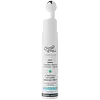What's inside
What's inside
 Key Ingredients
Key Ingredients

 Benefits
Benefits

 Concerns
Concerns

 Ingredients Side-by-side
Ingredients Side-by-side

Water
Skin ConditioningButylene Glycol
HumectantDicaprylyl Carbonate
EmollientGlycerin
Humectant1,2-Hexanediol
Skin ConditioningNiacinamide
SmoothingStearic Acid
CleansingPalmitic Acid
EmollientBetaine
HumectantArginine
MaskingCarbomer
Emulsion StabilisingPolyglyceryl-3 Stearate
EmulsifyingAllantoin
Skin ConditioningCetearyl Olivate
Tocopherol
AntioxidantSodium Hyaluronate
HumectantAdenosine
Skin ConditioningEthylhexylglycerin
Skin ConditioningRosmarinus Officinalis Leaf Oil
MaskingGlycyrrhiza Glabra Root Extract
BleachingCitrus Nobilis Peel Oil
MaskingCentella Asiatica Extract
CleansingNelumbo Nucifera Root Extract
Skin ConditioningPanax Ginseng Root Extract
EmollientHydrolyzed Hyaluronic Acid
HumectantCaramel
Cosmetic ColorantWater, Butylene Glycol, Dicaprylyl Carbonate, Glycerin, 1,2-Hexanediol, Niacinamide, Stearic Acid, Palmitic Acid, Betaine, Arginine, Carbomer, Polyglyceryl-3 Stearate, Allantoin, Cetearyl Olivate, Tocopherol, Sodium Hyaluronate, Adenosine, Ethylhexylglycerin, Rosmarinus Officinalis Leaf Oil, Glycyrrhiza Glabra Root Extract, Citrus Nobilis Peel Oil, Centella Asiatica Extract, Nelumbo Nucifera Root Extract, Panax Ginseng Root Extract, Hydrolyzed Hyaluronic Acid, Caramel
Water
Skin ConditioningStearic Acid
CleansingPropanediol
SolventCoco-Caprylate
EmollientLactobacillus Ferment Lysate
Skin ConditioningCamellia Sinensis Leaf Extract
AntimicrobialPunica Granatum Extract
AstringentCaffeine
Skin ConditioningChenopodium Quinoa Seed Extract
Skin ConditioningGlyceryl Stearate
EmollientCetyl Alcohol
EmollientCetearyl Alcohol
EmollientBetaine
HumectantButyrospermum Parkii Butter
Skin ConditioningOlea Europaea Fruit Oil
MaskingPrunus Amygdalus Dulcis Protein
Skin ConditioningPhenoxyethanol
PreservativeAmmonium Acryloyldimethyltaurate/Vp Copolymer
Allantoin
Skin ConditioningTrisodium Ethylenediamine Disuccinate
Tocopheryl Acetate
AntioxidantSodium Hyaluronate
HumectantOryza Sativa Cera
Skin ConditioningHydrolyzed Amorphophallus Konjac Root
HumectantPhospholipids
Skin ConditioningSphingolipids
EmollientDisodium EDTA
Water, Stearic Acid, Propanediol, Coco-Caprylate, Lactobacillus Ferment Lysate, Camellia Sinensis Leaf Extract, Punica Granatum Extract, Caffeine, Chenopodium Quinoa Seed Extract, Glyceryl Stearate, Cetyl Alcohol, Cetearyl Alcohol, Betaine, Butyrospermum Parkii Butter, Olea Europaea Fruit Oil, Prunus Amygdalus Dulcis Protein, Phenoxyethanol, Ammonium Acryloyldimethyltaurate/Vp Copolymer, Allantoin, Trisodium Ethylenediamine Disuccinate, Tocopheryl Acetate, Sodium Hyaluronate, Oryza Sativa Cera, Hydrolyzed Amorphophallus Konjac Root, Phospholipids, Sphingolipids, Disodium EDTA
Ingredients Explained
These ingredients are found in both products.
Ingredients higher up in an ingredient list are typically present in a larger amount.
Allantoin is a soothing ingredient known for its protective and moisturizingg properties. Because of this, it is often added to products with strong active ingredients.
Studies show higher concentrations of this ingredient can promote wound healing.
Though it can be derived from the comfrey plant, allantoin is produced synthetically for cosmetic products to ensure purity.
Learn more about AllantoinBetaine is a common humectant (a substance that promotes retention of moisture). It's known to be gentle on the skin and can help balance hydration.
This ingredient is best for improving hydration and soothing irritated skin. Studies also show it helps even out skin tone.
Fun fact: Betaine is naturally created in the skin and body. The kind found within cosmetic products can be either plant-derived or synthetic.
Another name for betaine is trimethylglycine.
Learn more about BetaineSodium Hyaluronate is hyaluronic acid's salt form. It is commonly derived from the sodium salt of hyaluronic acid.
Like hyaluronic acid, it is great at holding water and acts as a humectant. This makes it a great skin hydrating ingredient.
Sodium Hyaluronate is naturally occurring in our bodies and is mostly found in eye fluid and joints.
These are some other common types of Hyaluronic Acid:
Learn more about Sodium HyaluronateStearic Acid is a fatty acid. It is an emollient, emulsifier, and texture enhancer.
As an emollient, stearic acid helps soften skin. It aids the skin's protective barrier by preventing water loss. It also provides a gentle cleansing effect without stripping away natural oils.
Stearic acid may also be used to enhance the texture of products. It can add volume and stabilize ingredients such as water and oil. This can help water and oil ingredients from separating.
Sources of stearic acid include animal or vegetable fats/oils such as coconut or shea. It can be naturally found in butter, cocoa butter, shea butter, vegetable fats, and animal tallow.
This ingredient may not be Malassezia folliculitis, or fungal-acne safe.
Learn more about Stearic AcidWater. It's the most common cosmetic ingredient of all. You'll usually see it at the top of ingredient lists, meaning that it makes up the largest part of the product.
So why is it so popular? Water most often acts as a solvent - this means that it helps dissolve other ingredients into the formulation.
You'll also recognize water as that liquid we all need to stay alive. If you see this, drink a glass of water. Stay hydrated!
Learn more about Water